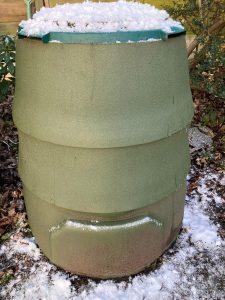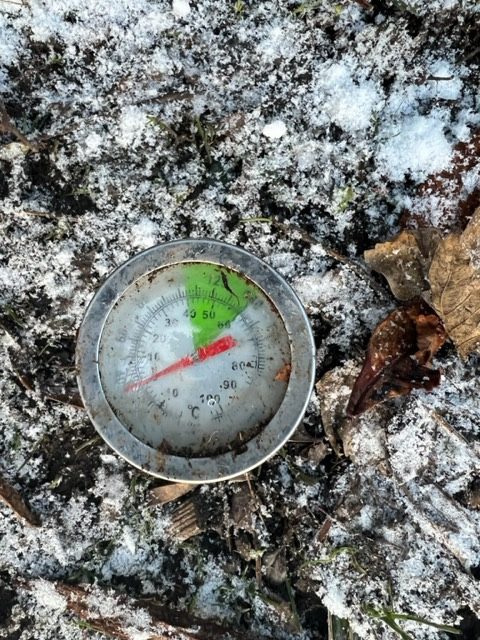Hot composting is basically a set of techniques. By following these techniques you can achieve higher temperatures and faster decomposition than traditional regular composting, which is usually referred to as cold composting.
If you want the simplest way to achieve higher temperatures, then using a well-designed unit such as the Green Johanna, along with its Insulating Jacket, is your best bet. We have many customers who hot compost without the jacket, but they tend to be experienced composters who want active involvement in managing the bin.
Some members of the Great Green Systems team keep the Johanna’s jacket on virtually all year round, removing it in the summer during hot weather when the compost temperature approaches 70 degrees Celsius.
We recommend that in winter if external temperatures fall lower than 5 degrees Celsius the jacket should be added to avoid the composting process stalling.
The jacket gives you more control. As well as helping to raise the temperature, you also have the option of removing it in order to lower the temperature if it gets too hot. Temperatures above 70 degrees will become too hot for the composting creatures to survive. If these aerobic micro-organisms start to die off, the process could stall so the jacket should be removed to allow the bin to cool down.

A Great Green Systems Johanna and jacket in January this year when the ground temperature was at zero, below.


But inside the Johanna the compost kept warm at 40 degrees C.
Some customers have expressed concerns that the Insulating Jacket will make the Johanna too hot for worms; this is not a problem because worms can easily enter and leave the composter through the small holes in the base plate. At temperatures above 30 degrees Celsius they will move where it is cooler, usually the bottom of the bin where the compost is maturing, or they can leave the bin completely.
A good fit
The Insulating Jacket is made from polyethylene and comprises three ring sections and a lid piece. When fitting the jacket, it’s essential that the bottom section does not cover the vents at the sides of the Johanna’s base as these are necessary for airflow.
The two upper sections should be added so that they overlap the section below by about 5 cms, ensuring that the ventilation holes at the top of the composter remain uncovered. The jacket fits snugly so that no cold draughts can get in between the jacket and the bin.
Composting outcomes depend on various factors and that includes the composter’s level of interest and involvement. Of course, as keen composters ourselves we are bound to say it’s a fascinating subject that can become an enjoyable hobby, but don’t just take our word for it.
Adam Johannes, also known to his customers and followers as Compost Guy, says he really enjoys the active hands-on involvement of aerating his Johanna. Anthea Rossouw, who has been teaching composting using Johannas for decades, both in this country and in South Africa, says she loves to see people who started out knowing nothing becoming evangelical about their new interest. A new customer who took up composting recently on retirement admits cheerfully that she has become ‘obsessed’.
We hear so many different stories depending on various locations covering the length and breadth of the country, whether that is in sheltered inland areas, wind-battered coastal regions, rural or urban, and indeed countries abroad too.
Even with the jacket added, don’t forget your good composting habits:
- Feed regularly
- Balance carbon/nitrogen ratios
- Aerate regularly
- Chop items small
- Check moisture levels
And remember the Johanna was designed in Sweden to withstand temperatures of -20 degrees C. So wherever you are, with the jacket on, your Johanna is good to go this winter.



